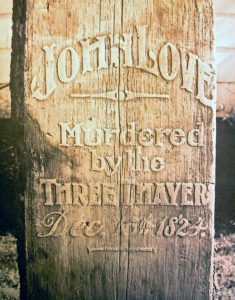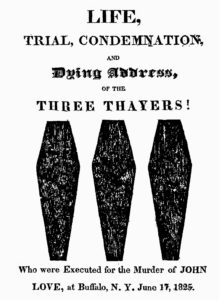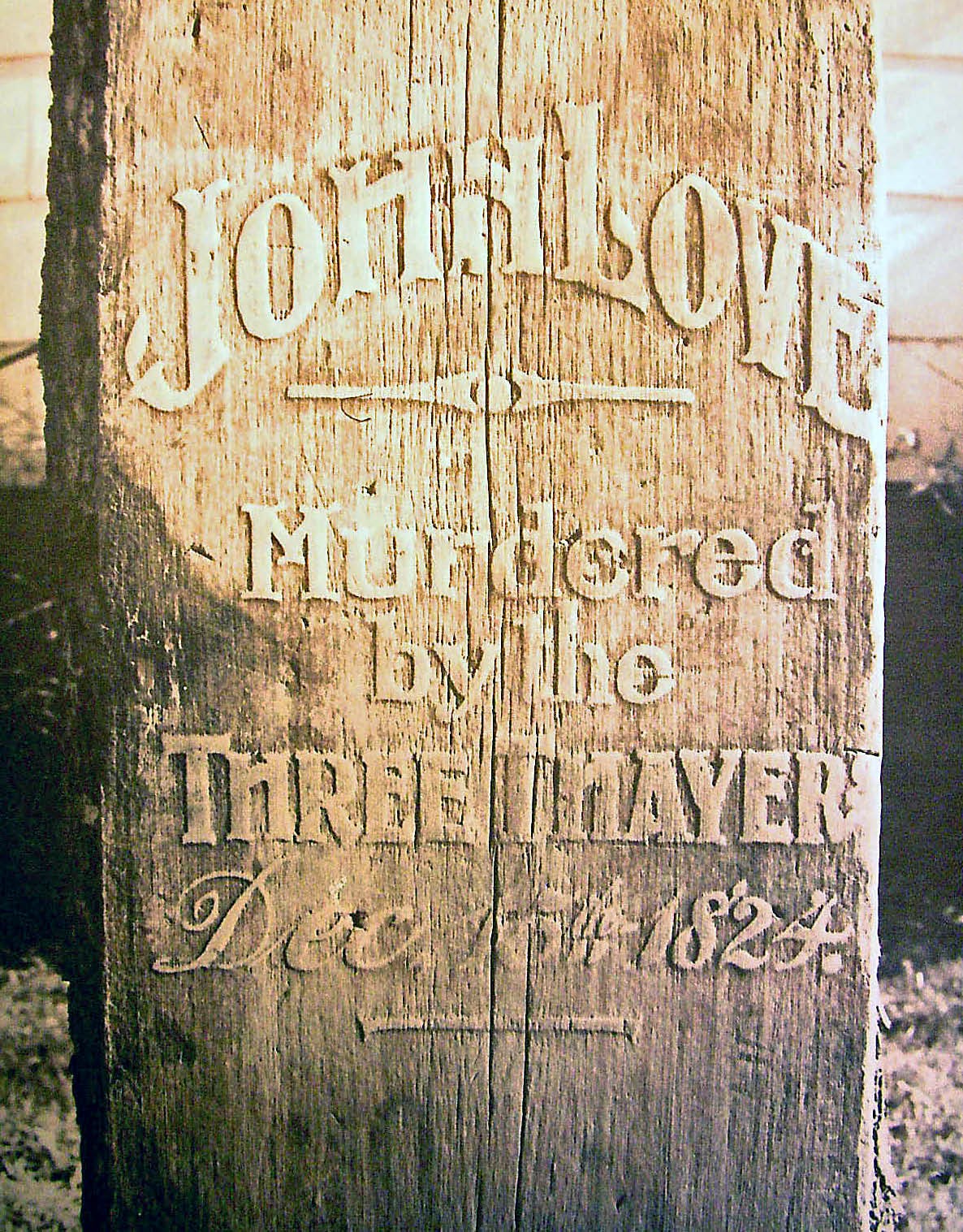We don’t frequently encounter stories of murder and mayhem in the course of researching Constitution’s 1812 crew, but when dealing with nearly 1,200 men of all different dispositions, it was bound to happen.
Such is the story of one John Love, ordinary seaman. He joined Constitution’s crew on July 3, 1812 at Annapolis and fought in the battles against HMS Guerriere and HMS Java. He left the ship sometime after its return to Boston in February 1813. Like many of his shipmates, Love was not a native born American. On the contrary, according to one contemporary, “[h]e was an Englishman and apparently wasn’t glad of it. He had come from Bath after many adventures, having enlisted in the American navy and joined the frigate Constitution.” One acquaintance said, “he was a short man, not five feet ten inches high, and would weigh about one hundred and thirty pounds; and was from twenty to thirty years of age. I do not know as he was a very singular or odd man, never saw him quarrel, he was a temperate, sober man.” Like any good sailor, he had an anchor tattoo on one arm.
“On his discharge came to Buffalo to ‘traffick’ along the lakes with some money he had laid by, for he was shrewd, calculating and a clever student of human foibles.” With the cash he had amassed (some of it prize money from the capture of the Guerriere and Java, no doubt) he began lending to various individuals in Upstate New York. He lent a considerable sum to Israel, Isaac, and NelsonThayer of Boston, NY.
By the middle of December 1824, Mr. Love decided it was high time they start paying back the loan. He made a visit to the Thayers’ farm and that was the last time anyone saw him alive.
The brothers welcomed Love into their house, seated him before the fire. It was hog butchering time on the farm, and the brothers used this as a pretext for leaving Love alone. But it wasn’t hogs they were intent on butchering. As Love warded off the chill, one Thayer brother shot him in the back of the head through the window, and another rushed in and finished him off with an axe. They then dragged the body outside and behind the house and buried it in a shallow grave beneath a fallen log.

The Thayer brothers might have gotten away with it had they been a little more clever. A few days later Israel was seen riding Love’s horse. Soon after, the neighbors discovered that Isaac had Love’s papers and was trying to collect debts in Love’s name. The brothers swore that Love admitted to murdering a man in Pennsylvania and had fled to Canada to avoid the law. This made the neighbors doubly suspicious, and the authorities moved in to search the Thayer property. They quickly found Love’s body where he’d been left. The brothers were arrested, tried, found guilty, and hanged in Niagara Square, Buffalo in June 1825. It was a sensational trial and execution covered by papers around the country. As one pamphlet gleefully announced, it was the only triple hanging ever carried out in New York to that time.

Many thanks are due to Sherrie Pluta who kindly provided many of the sources used in this post.
The Author(s)
Matthew Brenckle
Research Historian, USS Constitution Museum
Matthew Brenckle was the Research Historian at the USS Constitution Museum from 2006 to 2016.
